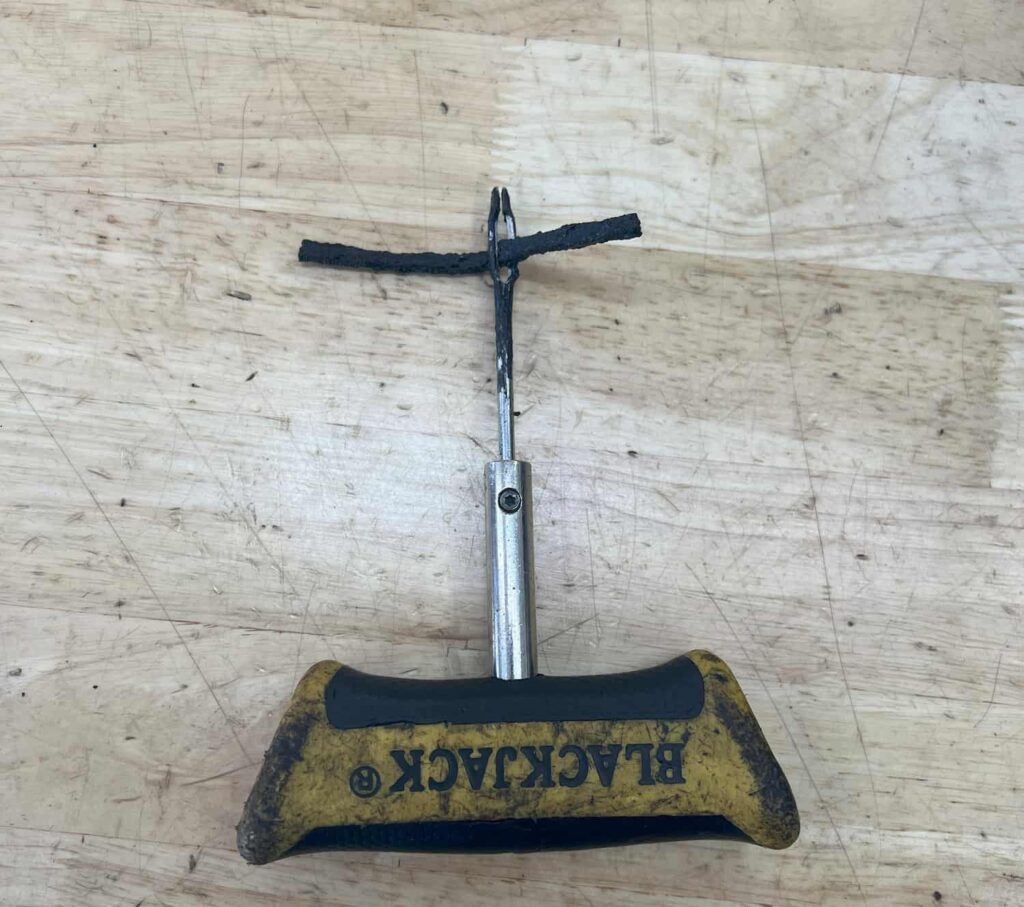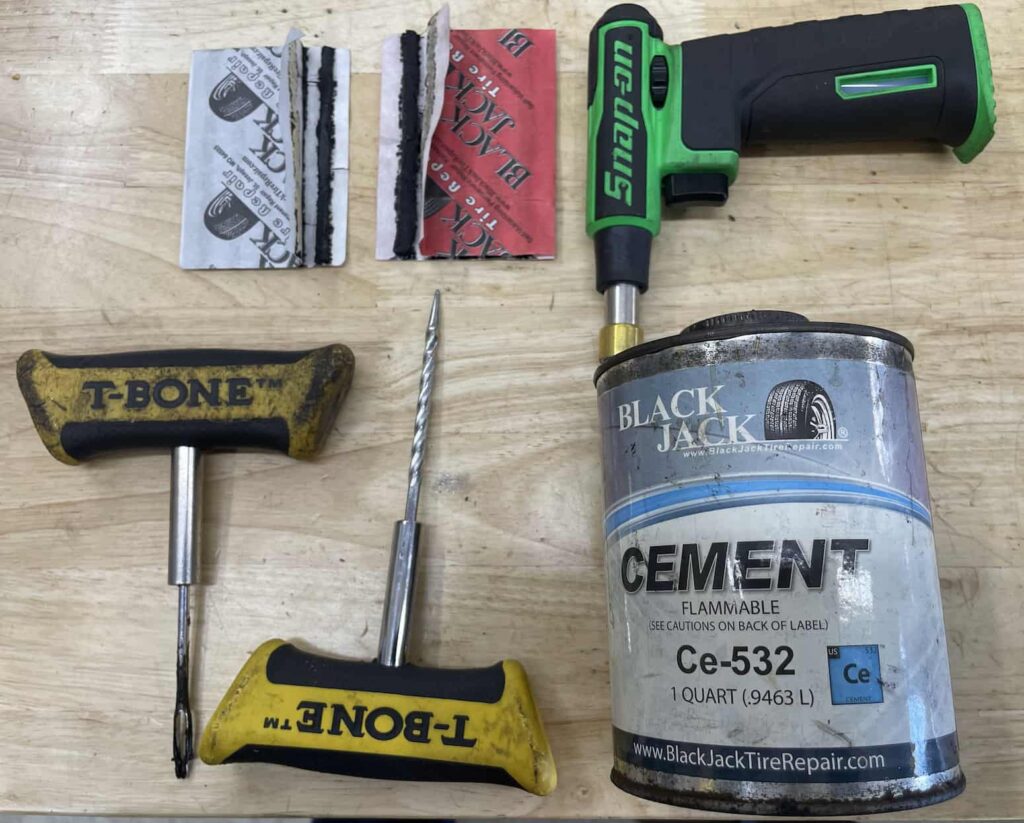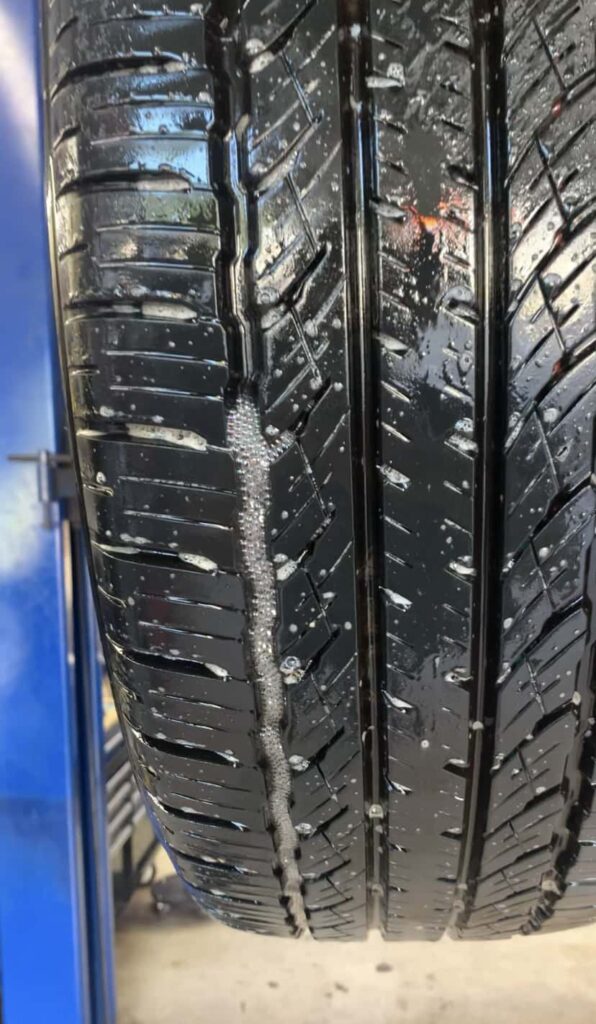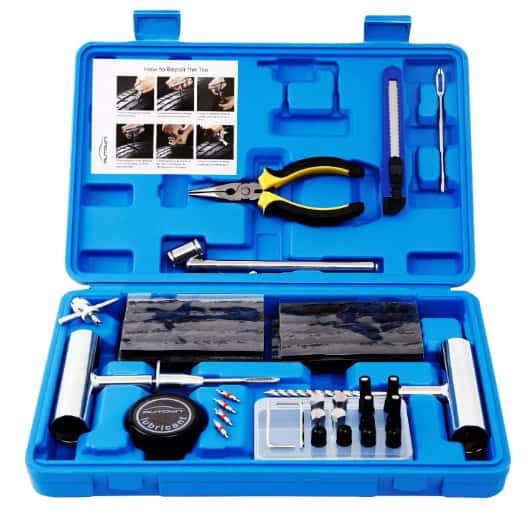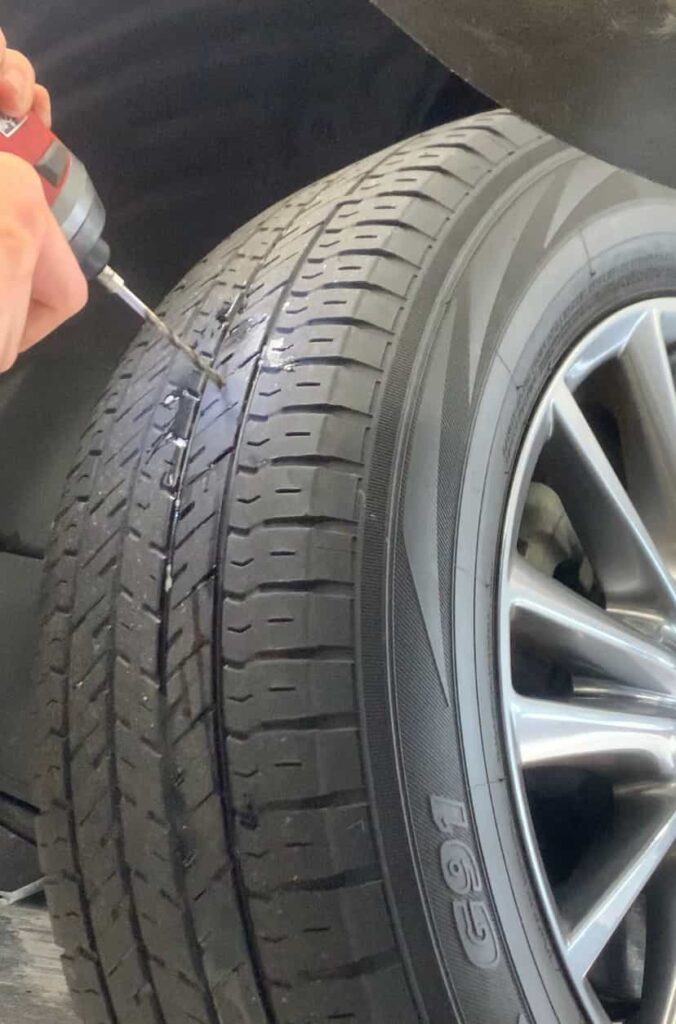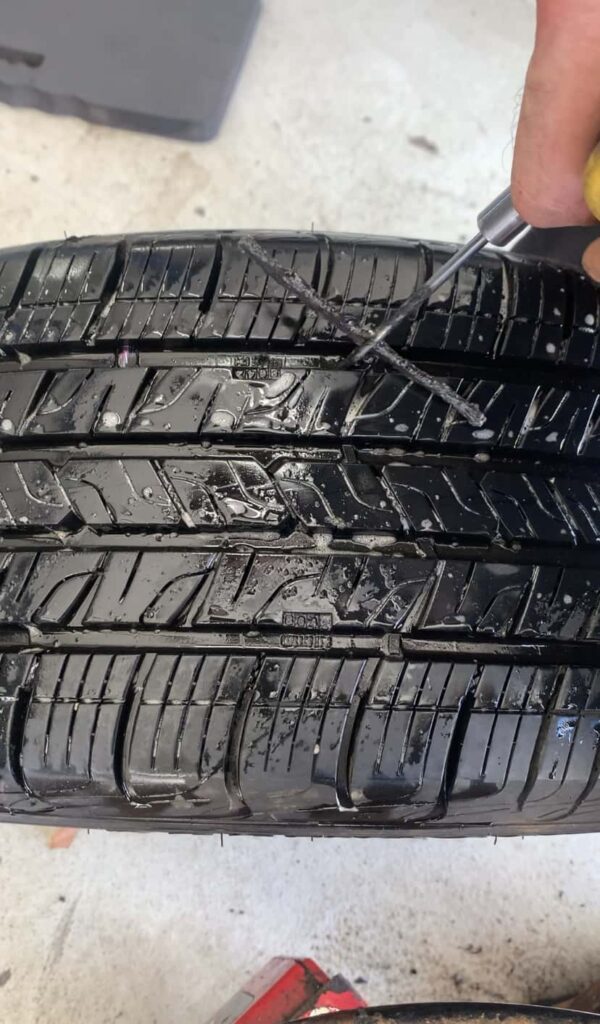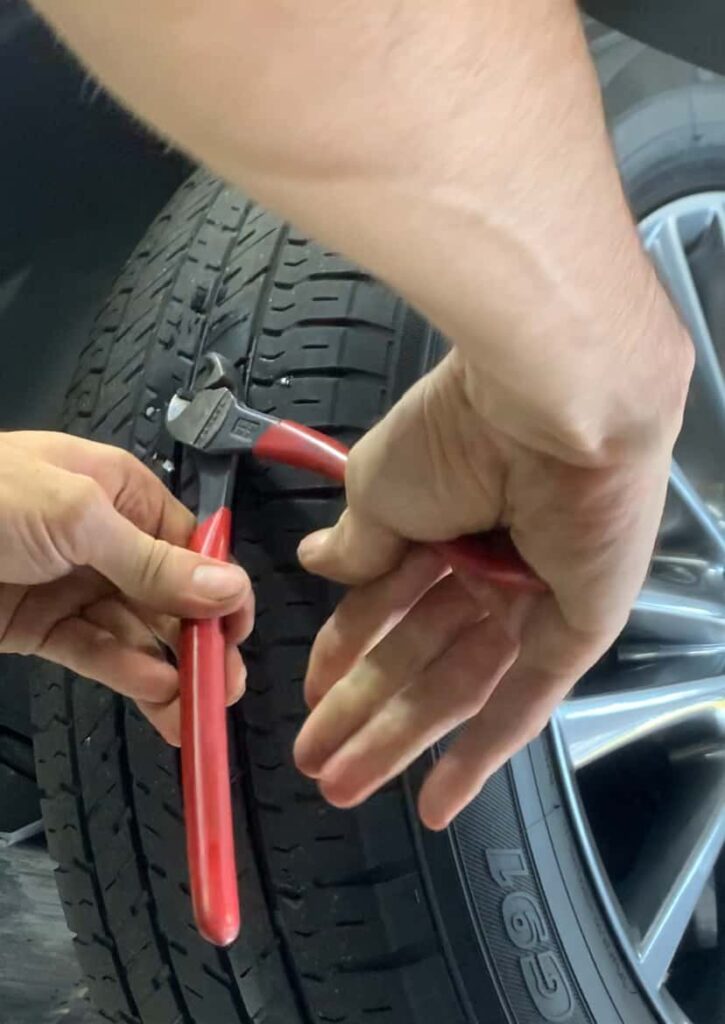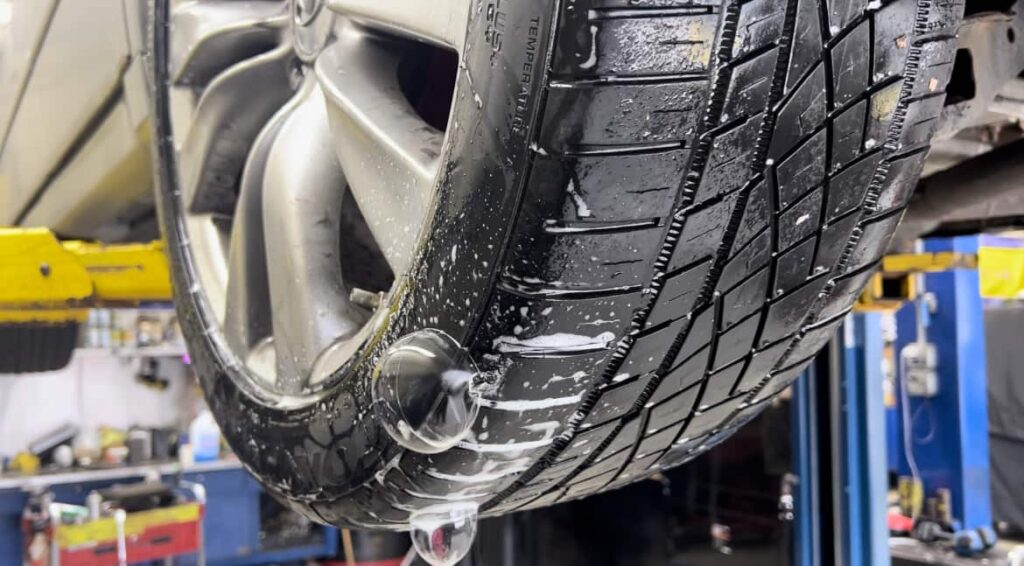Introduction to Tire Plugging
Ensuring your vehicle’s tires are in top condition is fundamental for safety, optimizing driving performance, and prolonging tire life. Tire plugging emerges as a prominent method for fixing punctures efficiently, offering a quick return to the road and minimizing disruption. This article provides a detailed walkthrough on the tire plugging process, highlighting its significance for drivers faced with punctures from nails, screws, or other sharp objects. Understanding the scenarios where a plug on tire is applicable and mastering the correct application technique is vital.
Tire plugging is particularly adept at repairing punctures located in the tread area. It’s crucial to recognize that not all types of tire damage are amenable to this approach. In certain instances, a permanent repair may necessitate a complete tire replacement or a different kind of tire repair.
Tools and Materials Needed
Before you begin the process of plugging a tire, it’s essential to have the right tools and materials at your disposal. This preparation ensures the repair process is smooth and effective. Here’s what you’ll need:
List of Tools for Tire Plugging
Tire Plug Kit: These kits typically contain a plug insertion tool, tire plugs, a reaming tool, and sometimes rubber cement for enhanced sealing.
Pliers: Vital for extracting the object that caused the puncture. Diagonal cutting pliers work best.
Tire Inflator: Needed to restore air pressure in the tire post-repair.
Gloves: Protective gear to safeguard your hands during the repair.
Selecting the Right Tire Plug Kit
Choosing a high-quality tire plug kit is critical for a successful repair. Look for kits that come with sturdy tools and a good selection of plugs. In my experience, cheap plugs don’t seal the leak. Some kits are designed for specific types of tires, such as motorcycles or heavy-duty vehicles, so select one that matches your vehicle’s requirements.
Step-By-Step Guide to Plugging a Tire
Repairing a tire with a plug can be broken down into several key steps. Here’s how to do it:
Locating the Puncture
Inspect the Tire: Rotate or spin the tire and look closely for the puncture site. You might find a nail, screw, or other objects embedded in the tire.
Spray the Tire: Spray the flat tire with soapy water or Windex and search for bubbles!
Mark the Puncture Site: Once identified, mark the area with chalk or a marker. This helps you keep track of the spot during the repair process.
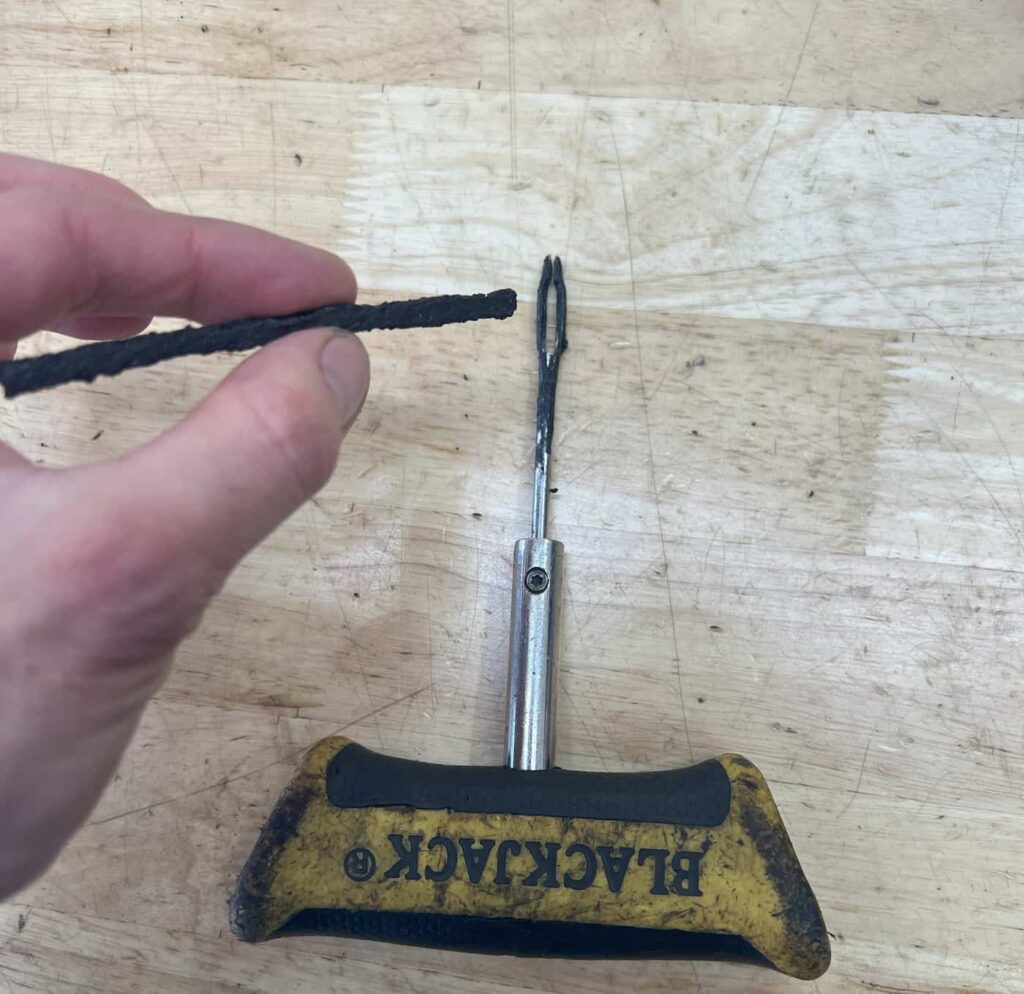
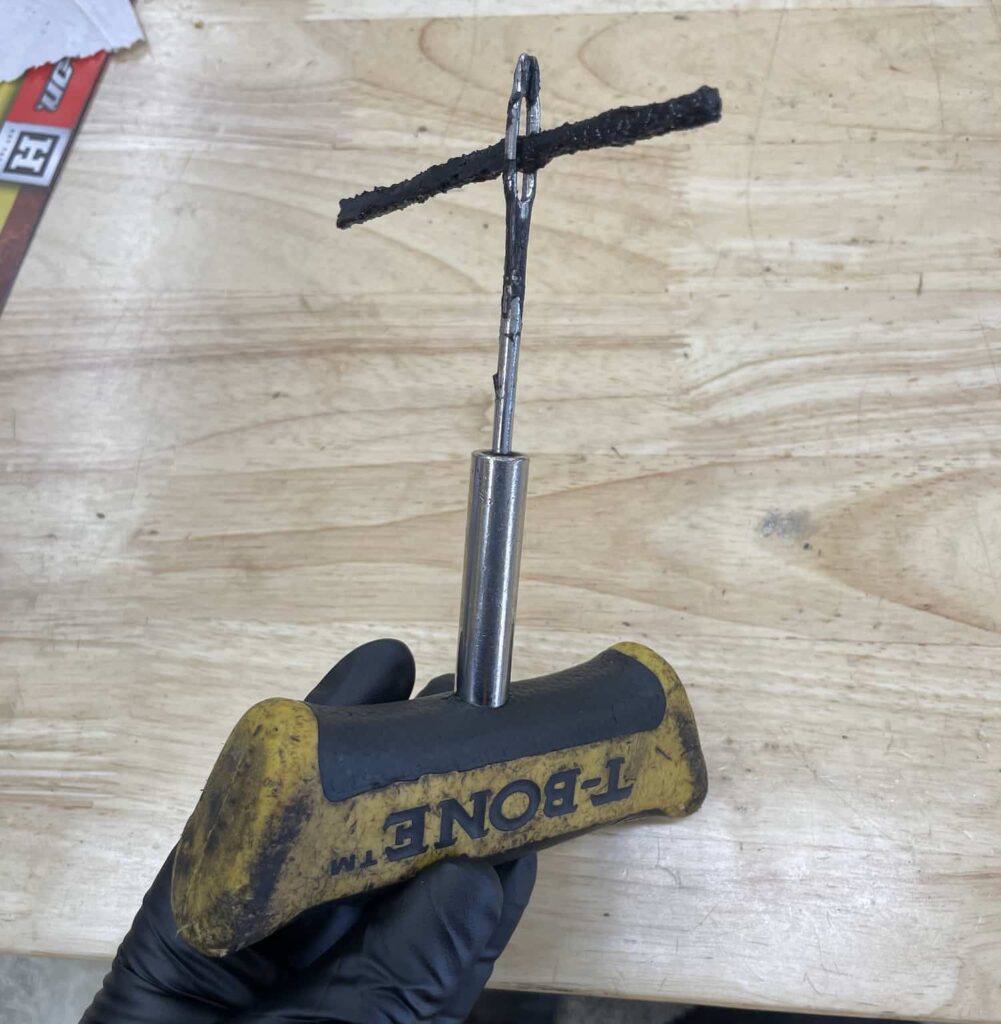
Preparing the Puncture Site
Remove the Object: Use pliers to carefully remove the object from the tire. Grip it firmly and pull it straight out to avoid enlarging the puncture.
Ream the Hole: Insert the reaming tool (included in your tire repair kit) into the puncture. Push and pull the reamer in and out to roughen and enlarge the hole slightly. This step ensures the plug adheres properly. Using a small drill bit to drill out the hole also works.
Inserting the Tire Plug
Prepare the Plug: Take a tire plug and thread it through the eye of the insertion tool, ensuring it’s centered.
Apply Rubber Cement: If your kit includes rubber cement, apply a generous amount to the plug and around the puncture site.
Insert the Plug: Push the plug insertion tool and plug into the hole until about two-thirds of the plug is inside the tire. Push hard! Twist the tool slightly if necessary to facilitate insertion.
Remove the Tool: Pull the tool out sharply, leaving the plug in the tire. The plug should seal the puncture from the inside.
Finishing Touches
Trim the Plug: Use a knife or cutting pliers to trim any excess plug material flush with the tire surface.
Re-Inflate the Tire: Use a tire air inflator to bring the tire back to its recommended pressure.
Check for Leaks: Finally, apply soapy water to the repaired area and look for air bubbles that would indicate a leak. If there are no bubbles, your repair is successful.
Safety Considerations and Tips
When dealing with tire repairs, particularly tire plugs, prioritizing safety and understanding the limitations of a plug repair are paramount.
TIRE SIDEWALL LEAK
When to Seek Professional Help
Sidewall Damage: Punctures in the sidewall of the tire are not repairable with a plug. The sidewall flexes as you drive, which can cause the plug to fail. In such cases, tire replacement is the only option.
Large Punctures: If the puncture is larger than 1/4 inch (about 6 mm) in diameter, a plug may not provide a reliable seal. Such damage often requires a combination patch and plug repair or tire replacement.
Multiple Punctures: If there are several punctures close to each other, the structural integrity of the tire may be compromised, necessitating replacement.
Maintaining Your Tires Post-Plug
Regular Inspections: After plugging a tire, regularly inspect it for signs of wear, damage, or failure of the plug repair. Pay attention to any changes in driving feel or unusual noises, as these can indicate a problem.
Professional Evaluation: Consider having the tire inspected by a professional during your next service. They can assess the repair’s integrity and recommend if the tire is safe to continue using or needs replacement.
Tire Pressure Monitoring: Keep a close eye on the tire pressure of the repaired tire. A slow loss of pressure over time could indicate a leak around the plug and lead to a flat tire.
FAQ's on Tire Plugging
Can I plug a tire myself?
Yes, plugging a tire can be a DIY task with the right tools and materials. However, it’s important to assess the damage carefully and recognize when professional help is needed.
How long does a tire plug last?
A tire plug will last for the remaining life of the tire tread in many cases.
Is tire plugging safe?
When done correctly, on appropriate punctures (not in the sidewall, not too large), and with regular monitoring, tire plugging can be a safe solution.
Should I replace a plugged tire?
While a plug can extend the life of a tire, it’s important to consult with a tire professional to determine if and when the tire should be replaced, considering the overall tread condition and age of the tire.
Can a plugged tire be patched?
Yes a tire that has been plugged can also be patched from the inside by a professional, removing the plug and using a patch can make for a more reliable fix.
Is it okay to plug a tire more than once?
While it’s possible, plugging a tire in multiple places is not recommended as it can compromise the tire’s structural integrity. Always seek professional advice if multiple punctures occur.
About the Author
Professional Automotive Technician – I am currently an automotive technician in New Jersey and have worked in private shops as well as dealerships. When I am not writing articles I am wrenching on race cars and driving radio controlled cars at the track!
Please note that this blog post contains Amazon affiliate links. This means that if you make a purchase through one of these links, we at TPMSRESET.COM may earn a small commission at no extra cost to you. We only recommend products that we personally use and believe in. Thank you for supporting us.
